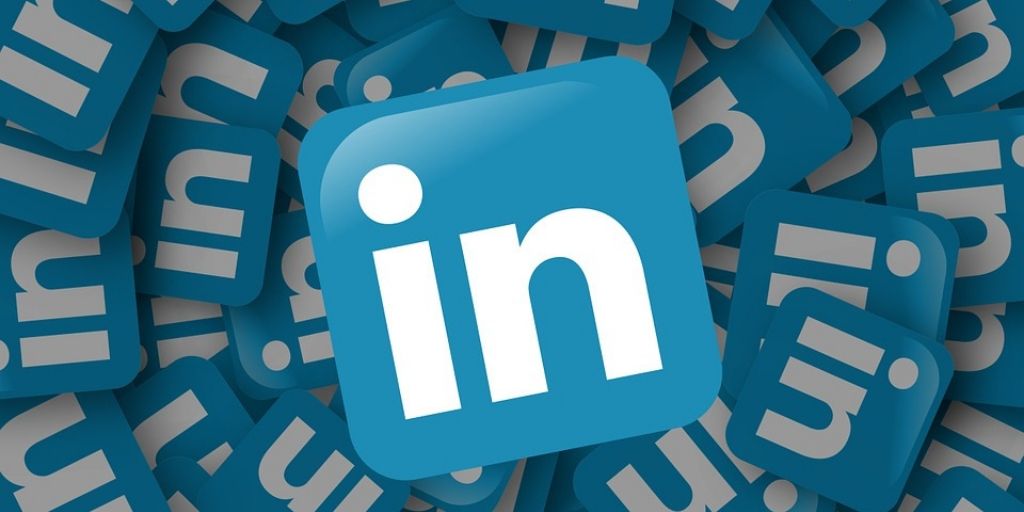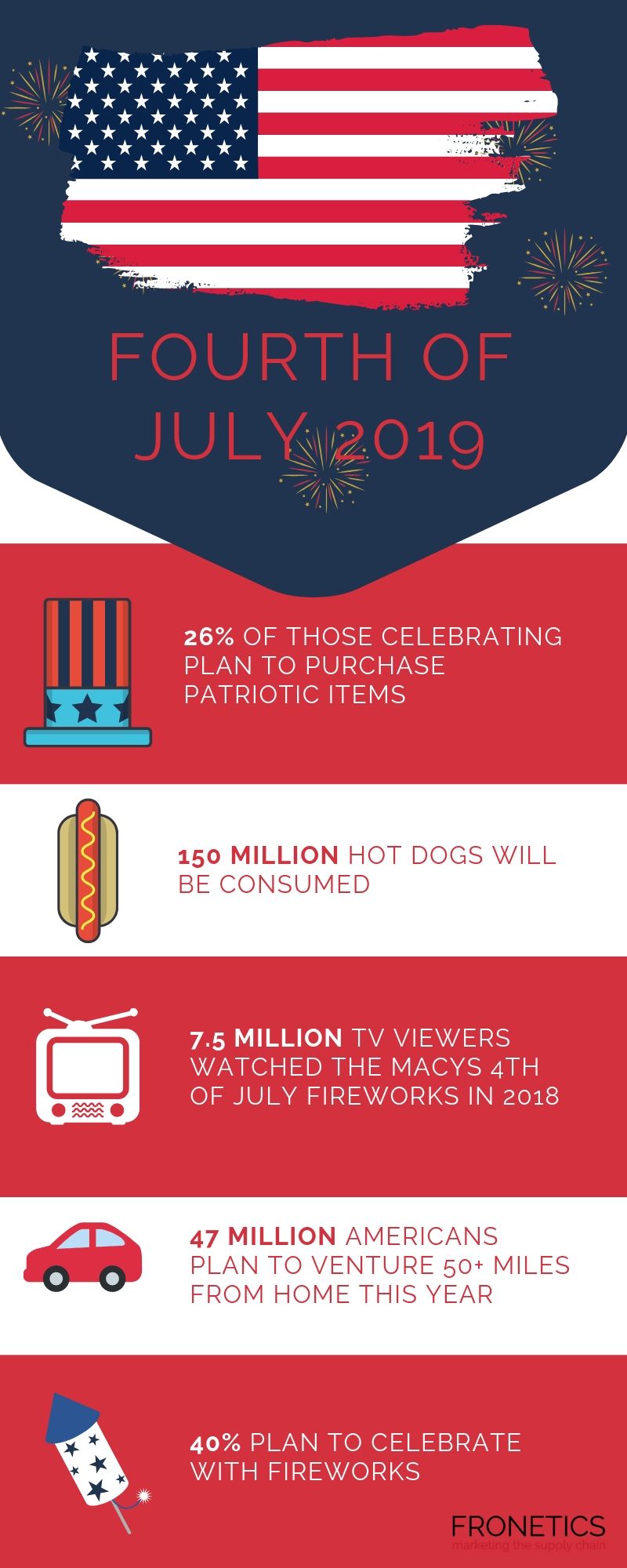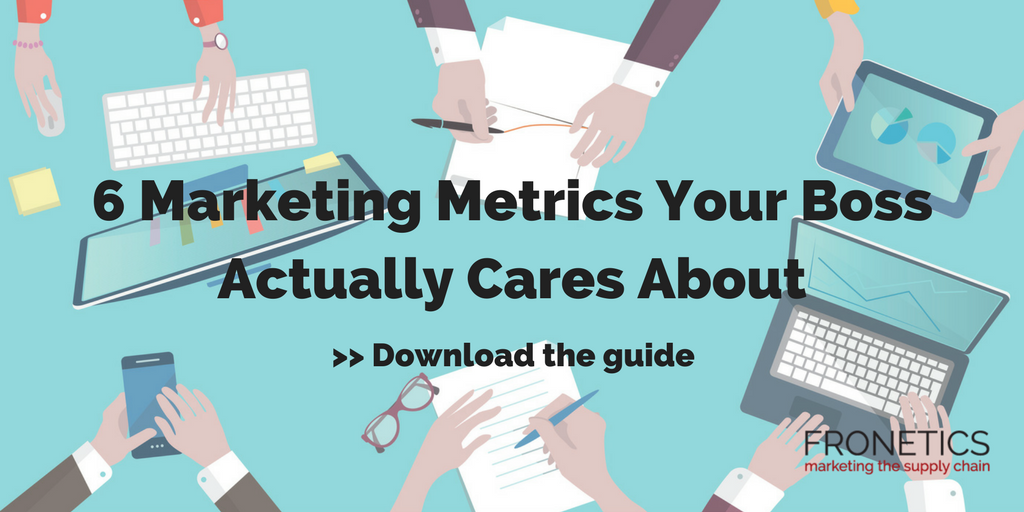
by Jennifer Hart Yim | Jul 9, 2019 | Blog, Content Marketing, Logistics, Marketing, Social Media, Supply Chain
LinkedIn a great place for businesses to make relevant LinkedIn users aware of their brand. However, there are common mistakes that companies make on LinkedIn.
LinkedIn is a powerful social network to connect with industry professionals, especially for B2B(business to business). People use LinkedIn to connect with coworkers and industry peers, get business advice, and even find new jobs. It’s a great place for businesses to make relevant LinkedIn users aware of their brand. However, just like Facebook and Twitter, there are common mistakes that companies make on LinkedIn.
Here are 9 LinkedIn for business strategies to avoid, as well as how to remedy them.
1. You Don’t Answer Questions.
The “Answers” section of LinkedIn, where people go to ask their business-related questions, is a place where businesses establish themselves as industry experts and even find new customers. These questions are categorized by industry; anything from finance & accounting to marketing & sales. Avoiding answering questions because you’re too shy or don’t want to invest the time is such a missed opportunity. Take a few minutes each day to look at the new questions in your industry, and see if there is a question you can provide a helpful answer to.
2. You’re Overly Self-Promotional when Answering Questions.
If you were in a bind and reached out to a community of peers for help, would you want the only response to be “Give me your money”? Of course not. You’d hope for honest and valuable guidance. The “Answers” section of LinkedIn is a fantastic place to find potential customers who have publicly revealed that they have a problem your service/product would solve. Instead of proclaiming that they should hire or buy from you to reach a solution, offer useful advice and let them know to contact you directly if they have more questions. This way, you’ll be building a relationship that will gain their trust, and then they’ll be more likely to turn into a customer.
3. You Don’t Join or Participate in Groups.
If you haven’t joined any relevant groups on LinkedIn, you’re missing out on a few things. First, being in a group lets you share links with that group, so you can share links to your own blog or site (in a very non-spammy fashion, of course). Second, you can find out the latest industry news, because other professionals post helpful links to groups constantly. Also, they’re a great place to find industry peers to connect with, whether to find new customers or even find fellow industry bloggers who could potentially link to you.
4. Your Profile is Blank/Incomplete.
Since you’ll be answering Questions and joining Groups with your personal account, you should make sure your own profile is complete so that you can gain people’s trust and establish authority. If people can’t learn anything about you in your profile, they won’t want to connect with you. Describe your role at your current and previous companies, and provide links to your website and any relevant profiles (i.e. Twitter).
5. Your Company Page is Blank.
Your company page has the potential to gain LinkedIn followers who will see your blog posts, company profile updates, and job openings appear in their LinkedIn newsfeed. But if your company description isn’t filled in, it might prevent people from following you, or even from finding you in the first place. Make sure you optimize your company page by including relevant keywords and links to your website.
6. You Don’t Promote Your LinkedIn Page on Your Website.
Keeping your company’s LinkedIn profile page a secret from your website visitors isn’t a good idea since these are the people most likely to actually follow you. Add a LinkedIn icon to your website to increase awareness of your presence on LinkedIn. Make it easy for your visitors to find out how to connect with you on social media.
7. You Ignore Connection Invitations.
Once you provide value in Answers and Groups, people will start inviting you to connect with them on LinkedIn. Don’t just ignore these invitations. Unlike Facebook, don’t feel like you need to personally know everyone that you connect with. LinkedIn automatically sorts your connections based on how you know them; whether through a current or previous job, or through a group, so don’t be concerned about having a network that’s too big to keep track of.
8. You Don’t Post Status Updates
It might seem like overkill to post updates on Facebook, Twitter, and LinkedIn. But it’s not. LinkedIn is a more professional social networking site than Facebook and Twitter, so it’s likely that you’ll have different followers here who will benefit from seeing your updates. It’s ok to re-purpose content across all of the social channels, as long as you’re not duplicating the content.
What would be your #9? Let me know in the comments below!
This article was written by Diana Urban, marketing manager at BookBub and the former Head of Conversion Marketing in HubSpot. Diana is a results-driven marketer and content strategist who’s passionate about inbound marketing at startups.
Related posts:


by Fronetics | Jul 3, 2019 | Blog, Current Events, Logistics, Supply Chain
U.S. Consumers will shell out $6.78 billion on food for cookouts and picnics for the Fourth of July 2019.
Highlights:
- Holiday food spending is projected to be down slightly from recent years.
- More Americans than ever (48.9 million) are planning to travel this Fourth of July.
- Men are expected to spend about $10 more on average than women.
As Americans get ready to celebrate the nation’s 243rd Independence Day, the National Retail Federation is making its annual list of projections for spending. Holidays have a big impact on the supply chain, and the Fourth of July is no exception.
Who’s spending what?
This year, 86% of Americans are planning to celebrate the Fourth of July. That number is down very slightly from recent years, with 87% celebrating in 2018 and 88% in 2017. Consequently, the average expected spending is down by just a few dollars this year, coming in at $73.33 per person, as compared with $75.35 last year.
Interestingly, while men and women are planning to celebrate in just about equal numbers (86% and 85% respectively), women plan to be significantly more frugal than men when it comes to purchasing food. Men are expected to spend $78.68 on average, while women plan to spend $68.20 each.
What’s everyone doing for the Fourth of July?
Cookouts, BBQs, and picnics are in most people’s plans (61%), with 40% planning to attend fireworks or other community celebrations, and 11% are attending parades. 26% of Americans are expected to purchase patriotic merchandise for Independence Day this year.
Even though overall spending is expected to be slightly down this year, AAA estimates that a record-breaking 48.9 million Americans are planning to travel this Fourth of July. This is a 4.1% rise over last year, with 1.9 million more people planning to get on the road this year. AAA credits the record numbers to lower gas prices, strong economic fundamentals, low unemployment, and rising disposable incomes.
Hot dog stats
Americans eat hot dogs better than just about anyone, and this Fourth of July, we’re expected to chomp down on roughly 150 million. It’s worth remembering that a year ago, Joey Chestnut set the record for the number of hot dogs eaten in 10 minutes, working his way through an impressive 74. Hot dogs are best washed down with a patriotic toast, and Americans are expected to spend upwards of $1.6 billion on beer and wine.
However you plan to spend the Fourth of July, Fronetics wishes you and your family a fun-filled and safe weekend.

(Made with Canva)
Related posts:
by Fronetics | Jun 20, 2019 | Blog, Content Marketing, Logistics, Marketing, Social Media, Supply Chain
Participating in social media is increasingly important for businesses in the supply chain. Here are the 3 steps to proving social media ROI.
Highlights:
- It may seem obvious, but too many businesses approach social media marketing with vague goals or none at all.
- Once you’ve set your goals and identified your key metrics, it’s time to implement a system that will track and measure your metrics.
- Once you’ve calculated ROI for your social media platforms, it’s time to think strategically about optimizing your content marketing resources in terms of allocation and timing.
Video transcript:
I’m Elizabeth Hines, Creative Director at Fronetics, and today we’re talking about three steps to prove social media ROI.
Participating in social media is increasingly important for businesses in the supply chain. But many clients tell us they have a hard time getting approval for the expense because it’s notoriously difficult to measure the return on investment.
Well it’s true that many of the benefits of social media — like greater brand awareness and improved communication with customers — are difficult to quantify, there are some ways to prove the ROI of your participation in social media.
Here are the 3 steps to proving social media ROI:
1. Set goals
I’m not talking “grow your business” or other vague benchmarks like that. I mean “increase web traffic from social by 10% over the next 90 days.” Really specific benchmarks and goals are important in measuring success.
2. Track and measure
Make sure you have means to accurately measure how you’re doing against your goals. All the social platforms have excellent analytics tools to help with this. We also use tools like Google Analytics and HubSpot.
3. React
Look at your metrics in the context of your goals. Once you figure out what’s helping you meet those objectives and where you’re falling short, you can tweak your efforts to be more successful and to make sure that you’re actually achieving your ROI.
For more information on social media and all things digital marketing, visit our website at Fronetics.com
Related posts:

by Fronetics | Jun 19, 2019 | Blog, Content Marketing, Current Events, Logistics, Marketing, Supply Chain
As the internet is increasingly dominated by visual content, social media analytics are failing to keep up.
Highlights:
- Most social media analytics tools are purely text-based.
- Even tools that analyze images are costly and offer limited insights.
- We predict that machine learning capabilities will improve and the gap between analytics capability and brands’ needs will close.
Here’s an interesting conundrum: social media, and the web at large, is becoming increasingly visual, and social media marketing relies on increasingly sophisticated analytics. However, most of the analytics tools out there are woefully unable to make sense of the visual content that is dominating social media. The alarming truth is that social media analytics are failing to capture invaluable data on visual content.
How social media analytics are failing to keep up
Big data and artificial intelligence expert Kalev Leetaru describes the shortfalls of social media analytics by detailing what they can — and can’t — do. While the capabilities of visual analytics have grown in the past several years, as Leetaru points out, most analytics tools that claim to analyze visual images are in fact based on textual or structural aspects of the image, not the visual content itself.
“The overwhelming majority of production social media analytics research relies primarily on hashtags and associated caption text, rather than the actual contents of the images themselves,” writes Leetaru. Instead, “from simplistic bag of words counting algorithms through advanced deep learning approaches, it is text that forms the lens through which we see social media.”
It’s important to note that this text-based approach is true not only for social media analytics, but for search engine algorithms. At Fronetics, we are constantly advising our clients to make use of visual content, from images to infographics to video, in their digital marketing efforts. But we always advise that marketers optimize their images for search engines, both by tagging all visual assets and publishing transcripts to go along with video or infographics.
In essence, we’re advising our clients to take advantage of the increasingly visual nature of the internet, while also hedging against the ways in which algorithms and social media analytics are failing to assess visual content. As Leetaru points out, even in the rare cases when an analytics tool offers image analysis, it “typically offers only a few basic lenses through which to analyze that content, such as logos and a small number of topics.”
Of course, analyzing visual content is no easy task, and it’s also not cheap. “Images don’t capture reality, they construct it,” observes Leetaru. Not only are there all kinds of variables, like framing or lighting, that come into play, but there is a tremendous amount of non-visual context that determines how an image will be received. And the fact is that “current deep learning approaches are largely unable to incorporate such external world knowledge into their assessments.”
The problem with analytical failure
It’s important for marketers to recognize that, at the current moment, there is a gap between the capabilities of analytics tools and the analytics needs for modern digital marketing. As we as a society “increasingly express ourselves exclusively through visual forms,” brands desperately need insights about this visual expression.
Leetaru sums up the problem with sobering simplicity: “As social media becomes more visual, it becomes less accessible to our data-mining algorithms. In turn, as social media is less and less data minable, we are less and less able to understand it.”
Perhaps even more alarmingly, he cautions that “given that visual expression skews towards the younger and influencer demographics of greatest interest to many brands, this transition is especially damaging to their ability to extract useful insights from social media.”
Essentially, what Leetaru is recognizing is that we’re at a perilous moment for digital marketing. Just when the possibilities for content creation and dissemination seem endless, social media analytics are failing to offer up the insights needed to shape these processes in an increasingly visual climate.
“In the end, as social platforms rush towards a visual-first world, the vast landscape of social analytics is getting less and less representative of what we’re really talking about,” concludes Leetaru.
What does the future hold for analyzing visual data?
While you may be thinking that the future looks pretty bleak in light of how social media analytics are failing us, there’s a silver lining. If there’s one constant when it comes to social media marketing, it’s that when there’s a demand, sooner or later, supply will catch up.
It’s true that the current visual analytics capabilities of most platforms are far behind what’s needed. But at Fronetics, we predict that deep machine-learning capacities will start to catch up, and increasingly sophisticated analytical capabilities will become available to a wider segment of the market.
Currently, social media analytics can recognize text, faces, and brand logos within images. While these capabilities are, at present, too costly for most companies to take advantage of, we’re keeping our eye on some emerging technologies. For example, analytics provider Scraawl has recently released a tool called Scraawl PixL, which will allow users to run object and face detection, as well as Optimal Character Recognition, which extracts text from images.
Expect to see more tools like PixL on the market, offering increasing sophistication. While social media analytics are failing to keep up with the onslaught of visual data at the moment, we predict that they won’t be behind for long.
Related posts:


by Fronetics | Jun 18, 2019 | Blog, Content Marketing, Logistics, Marketing, Strategy, Supply Chain, Website Development
The percentage of visitors that stay on your site is key to lead conversion and search engine rankings. Here are our top tips to reduce your website bounce rate.
Highlights:
- A high bounce rate will compromise your site’s search engine rankings.
- Slow website load times are a major cause of bounces.
- Publish high-quality, visually appealing content with relevant keywords and meta data.
When it comes to evaluating the performance of your website, bounce rate is a key indicator. But what does this term really mean for supply chain marketing? After we take a deeper dive into what a bounce rate is and why it’s important to track, we’ll offer 10 ideas to reduce your website bounce rate.
Bounce rate defined
Simply put, your website’s bounce rate is the percentage of users who enter your website and immediately leave, or “bounce,” without visiting any additional pages on your site. Bounces happen when visitors click the back button, navigate to a different URL, close their browser, or leave a page open without taking action.
Having a high bounce rate can be an indication that your site failed to convince the visitor to explore further or act on your call-to-action (CTA). Of course, no website, no matter how effective, has a 0% bounce rate. Some users are bound to leave your website without taking any action. But a healthy bounce rate is a key indicator of website success.
While bounce rate ranges vary based on industry and page type, the general ranges are:
- 80% or higher: bad
- 70%-80%: poor
- 50%-70%: average
- 30%-50%: excellent
- 20% or lower: likely a tracking error
However, the truth about good versus bad bounce rates is more nuanced than these ranges. Bounce rates can vary widely based on website type, channel, and the device visitors are using.
For example, blog posts typically have a high bounce rate (between 60% and 90%), simply because an effective post will give a user what he or she came for, and there’s no further need to explore your site. This doesn’t mean your blog is performing poorly, as bounce rate is just one in a list of metrics needed to assess the overall performance of a site.
Why does bounce rate matter?
Aside from the fairly obvious fact that a high bounce rate means that visitors aren’t being converted into customers on your site, there’s another serious ramification to your bounce numbers: search engine results. According to a recent study from SEMRush, “Bounce rate is the fourth most important ranking factor on search engine results pages.”
Every time a visitor bounces from your page, it signals to search engine algorithms that your site isn’t what the searcher was looking for, and your ranking will suffer. Having a handle on your bounce rate will help you form a clear picture of how your website is performing, as well as give you understanding of one of the key factors in determining your search engine ranking.
10 ways to reduce your website bounce rate
1) Keep an eye on your page load times.
A major cause of bounces is long loading times, particularly on mobile devices. If your page load time is slow, consider switching to HTTP/2.
2) Make sure navigation is easy.
For your website to entice visitors to stick around, it needs to be clearly labeled and easy for prospects to find and get to what they’re looking for.
3) Evaluate your first impression.
You only get one first impression. When it comes to your website, this means clear navigation menus, engaging headlines, easy-to-read text, subheadings and bullets, and minimal pop-ups or auto-play videos.
4) Publish high-quality content.
Perhaps this goes without saying, but there’s no substitute for high-quality content when it comes to keeping visitors engaged on your site.
5) Optimize your meta data.
A meta description is the text that appears below your website’s URL in search engine results. This text should accurately represent what the page contains, which helps ensure that visitors find what they’re looking for when they click.
6) Create a quality design.
Clean, compelling design is important for keeping users on your page. Ideally, your site’s design should not only be functional and intuitive, but aesthetically pleasing.
7) Optimize mobile experience.
Bearing in mind that mobile users typically have even less patience than desktop users, your site’s mobile version should have a quick load speed, clean design elements, and easy navigability.
8) Use relevant keywords.
The keywords you choose should not only be relevant to your audience’s search queries, but they should reflect what visitors will actually find on your site. If your site ranks high for a keyword that doesn’t relate to the majority of your content, then users searching for that keyword will quickly leave.
9) Write good calls-to-action (CTAs).
A good CTA is key not only to converting leads but also to reducing your website bounce rate. Ideally, your CTA should be clearly visible within the first few seconds of being on a page, and it should be compelling.
10) Use images and videos.
We live in a visual world, so naturally, this type of content connects best with users. Statistic after statistic supports the idea that visual content is dominating the internet. To reduce your website bounce rate, include visuals that keep your audience interested.
What tricks are you using to reduce your website bounce rate?
Related posts:
Is your business making the most of its web presence?
Get a free website audit
Discover untapped opportunities and places you may be losing leads with our free website audit.

by Fronetics | Jun 13, 2019 | Blog, Content Marketing, Leadership, Logistics, Marketing, Supply Chain, Talent
A new LinkedIn post takes a refreshing look at achieving a work-life balance for working parents. The article has been shared all over social media begging the question: does your office need to know?
The New York Times reported that more and more couples are choosing to have smaller families due to economic factors. Let’s face it: kids are expensive. Most families have to balance wages with the exorbitant cost of childcare.
And that doesn’t even begin to look at finding harmony between your career and your family. In a recent post on LinkedIn, Ian Sohn, a single father and president of Wunderman Chicago, takes a clever and honest look at creating a work-life balance, a juggling act many of us know all too well.
“You should never apologize for having a life.”
The post was a list of things this Chicago-based boss ‘never needs to know’ about his employees, including:
- I never need to know you’ll be back online after dinner.
- I never need to know that you’re working from home today because you simply need the silence.
- I never need to know why you chose to watch season 1 of “Arrested Development” (for the 4th time) on your flight to LA instead of answering emails.
- I never need to know you’ll be in late because of a dentist appointment. Or that you’re leaving early for your kid’s soccer game.
- I never need to know why you can’t travel on a Sunday.
- I never need to know why you don’t want to have dinner with me when I’m in your town on a Tuesday night.
The sentiments of Sohn’s post hit home with a lot of working parents — the post has almost 2,000 comments to date. So why does this list ring true for so many working mothers and fathers?
“Like any modern business … there’s an additional need to respect other people’s lives and environment you work in, and everyone is accountable for getting their job done,” says Sohn in USA Today.
As businesses have become more digital, the ability to do you work remotely has increased. Ask any employee who works remotely, and they’re very likely to tell you that working from home makes them happier and more productive. And they aren’t necessarily wrong. There’s certainly evidence to suggest that with today’s technology, there’s essentially no downside to working from home, and it does often enhance productivity.
Here at Fronetics, we believe, much like Sohn, in the balance between work and home life. As individuals, we strive to excel at our jobs through accountability. Have a doctor’s appointment? Need to attend a school performance? We don’t need to know.
Has your office implemented policies to encourage flexibility? Has it been successful?
Related posts:










